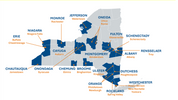When coronavirus required many restaurants to suddenly temporarily close, many farmers who provide much of the produce to that industry were left without a major component in their food supply channels.
Prior to coronavirus, "roughly half the food spending in the U.S. was what we call away from home—restaurants, the cafe near work, those types of venues,” said professor Tim Griffin, division chair of Agriculture, Food, and Environment at the Friedman School of Nutrition Science and Policy at Tufts University. “That number is a lot smaller now, which means people are having to buy food and make it at home.”
In April, Griffin estimated the split was more like 90/10. But it has been climbing steadily as states reopen. Demand was shifted largely to conventional grocery stores.
Farmers who have the opportunity to sell directly to consumers are seeing a huge increase in demand. This is especially the case for storage crops and things like value-added dairy products such as yogurt and cheese that they can produce year-round. “But all this is really challenging to those who don’t have the technological savvy or delivery infrastructure to go from dropping multiple boxes and pallets of food off at institutions, to selling to one consumer at a time,” said Jennifer Hashley, director of Tufts' New Entry Sustainable Farming Project.
Many farmers are changing some of their business over to home delivery, contactless delivery, and drive-by pick-up options. They are also expanding into online ordering and collaborative delivery models, in which many small producers aggregate their products and distribute them together.
Griffin predicted that crops with mechanized production, like corn, tomatoes, and some other fruits and vegetables, will continue to be widely available. But crops that rely on human labor, like strawberries, will be more subject to disruption.
Online sign-up systems with startups like Forager are helping farms "communicate their produce availability to retailers and local grocery stores in the past few months. And local consumer-supported agriculture programs also significantly helped keep the farm afloat." "'In recent months, there has been an explosion of small ideas that focus on virtual grocery stores and direct-to-consumer solutions', said Joe Blunda, CEO of Forager.'"
Online grocery sales in the US reached a record $7.2 billion in June and have risen steadily since March, according to a survey conducted by Brick Meets Click and Mercatus. The number of customers using online grocery and pickup services has also jumped 15% since March, the survey found.








